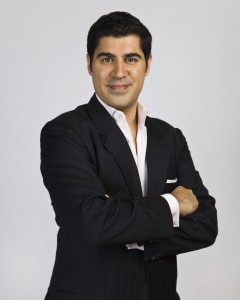SINGAPORE— Corporations, and not just governments, now play a huge role in helping communities and their leaders should take on a dual role as “CEO-statesman”, said academic Parag Khanna.
“We’ve moved from a world in which we assume that Governments are going to be the central actors in solving problems that … we can look to them as the place where policy will be driven and solutions will be made from. That world is gone,” argued the global strategist at a debate session organised by Ogilvy & Mather at its office last night (April 24).
Instead, “a supply chain governance” is important, where the leader is not simply a corporate figure who thinks about returns, but is “part-diplomat”, he said. Dr Khanna cited several examples, such as how delivery trucks are used to deliver vaccines around the world, or how some companies’ factory plants in Third-World countries ensure they hire mainly women.
“I think that’s a great thing, because there are enormous market failures and governance gaps, so I think wherever a company can reach out and touch the local and global level, that should be welcomed rather than resisted,” he said. “There is not a sector or company that cannot use its supply chain in a way that does much more than what its private corporate responsibilities are.”
Addressing comments that Singapore is often viewed as not being creative enough and whether it can be the next Silicon Valley, Dr Khanna said Singapore should not “consciously pursue to replicate another model as if it is some off-the-shelf kind of thing”. Instead of “replicating the creativity”, Singapore should be setting out to be an innovative centre that is catered to the Asian market, added the director of the Hybrid Reality Institute and senior fellow at the Singapore Institute of International Affairs.
He noted that Singapore should judge itself on how well it has capitalised on being in this Asian region and how much it has captured that market as well as its diversity of languages, ethnicities and socio-income levels.
“That is the real measure of whether or not Singapore has become an innovative centre, and not so much ‘does it produce the next Google or not?’ – that is a very high standard to set,” he said. “But to be the place where the products are adapted to the market, whether it is mobile phone devices or medical devices… whatever it is, ‘did you… adopt global technologies and global inventions to the Asian market?’ — that’s the goal that Singapore should be setting for itself.”
Dr Khanna said part of developing one’s own ideas is learning from others, and Singapore is in the phase where it is harnessing all the foreign knowledge and attempting to adapt it, while figuring out how to modify those inventions into local innovations.
He also praised Singapore as having high technology quotient because of its ability to harness data to make public services more efficient. For example, the country examines data on people’s movements, traffic patterns and usage of public transportation, to try and work with the taxi companies and utilities and so forth to anticipate demand and provide transport services more effectively, he added.
Dr Khanna also described Asia as a region to note. While it used to be only deemed as synonymous with China five years ago, the entire region is now seen as a powerhouse. This is especially so for the ASEAN region, which he described as “entering into this real sweet spot” with a younger, rapidly urbanising educated population, high female participation, robust infrastructure and high connectivity.
Asia is not just a destination, but a driver of economic growth, Dr Khanna said. “This used to be a place we outsourced (to), now we realise Asia’s one of the largest capital exporting regions in the world.”
Originally by Joy Fang, Source: April 29, 2014, TODAY

